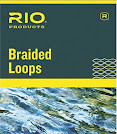"Now I have some questions on the Blue River in Oklahoma. I am a bit out of that loop.
2) I think the C-n-R is barbless? Kind of silly if you ask me, but my memory banks are full!
3) Are the stockings good in the C-n-R area? Still a mystery easter egg hunt?
"1) That parking on the E side of the Catch and Release (off 7) - is that just for parking, and there is still a hike up to the high point of the C-n-R?"
The parking on the East side off Hwy 7 is just for parking. It is designated as a walk-in area only and no camping.
Refer to Blue River Map below.
It is a 2+ mile hike to the Catch and Release area from the parking area on the East side of Hwy 7. For a shorter hike - about 1.3 miles, enter at the parking area furthest West of Hwy 7.
 |
| Parking Area Furthest West from Hwy 7 |
"2) I think the C-n-R is barbless? Kind of silly if you ask me, but my memory banks are full!"
The Catch and Release area is barbless. See excerpt below:
 |
| Retrieved from https://www.wildlifedepartment.com/fishing/regs/trout-area-information |
"3) Are the stockings good in the C-n-R area? Still a mystery Easter egg hunt?"
Changes each Season with larger trout noted in past stockings. For this Season, have been monitoring reports that indicate sizeable trout in the area. Picture below was posted 6 days ago.
 |
| 19" Rainbow Trout - Blue River C-n-R |
For more details, here are videos that may be of interest for anyone wanting to fish the Blue River Catch and Release Area:
First trip to the C-n-R, taking the "long route"...
Blue River's catch and release section was stocked recently. Gave it a try, ended up doing a lot of walking and scouting the river. First time fishing the C&R section. Trout are there, next round... plan to take a shorter path and do less walking and more fishing!
Was able to fish with the OPST Commando Head on the 9' 5wt. Does cast well in tight areas... roll casting and switch casting to where the fish were lurking was easily done!
Next trip to the C-n-R, taking the "shorter route"...
Headed back to Texas from Oklahoma City, decided to make one more stop at the Blue River Catch and Release area. Caught one, lost a number of others... still had a great time! Plus: Learned the parking area furthest west is best for accessing the C&R.
Detailed video of the C-n-R with key points noted in the video timeline:
Fished the Blue River in Oklahoma last Saturday - November 7. Plan was to fish the Hughes Crossing area for trout to make another catch and cook. Struck out though. That said, made the run North of HWY 7 and fished the Catch and Release Section. After a wrong turn or two, made it to the area and had a fun time catching, losing, and landing a trout or two.
Did see an armadillo on the walk back to the parking area, and stopped by the Fly Library to add a fishing fly or two to collection. Overall, a great time on the Blue River!
PS: Longer than normal video, have key points noted in the video for reference.
- Hughes Crossing: 1:06
- Walking In to the C&R: 2:09
- Fly Library Stop Inbound: 2:57
- Fishing the C&R: 4:49
- First Trout Caught: 6:52
- Fishing and Missing Trout: 10:49
- View of Retrieve Used: 17:20
- Walking Out of the C&R: 18:29
- Armadillo: 18:50
- Lesson Learned - Go Left not Right: 19:54
- FYI - Post Marker: 20:21
- FYI - Go Right not Left: 22:37
- Fly Library Stop Outbound: 21:26
How I Check My Hook is Barbless?:
Ever wonder if your hook is barbless when fishing an area that requires it? Try this fishing tip!
 |
| Retrieved from https://www.wildlifedepartment.com/fishing/regs/trout-area-information |

















